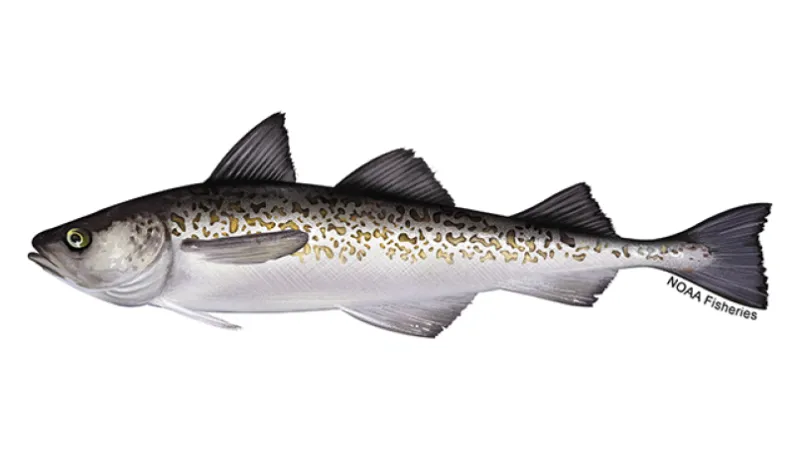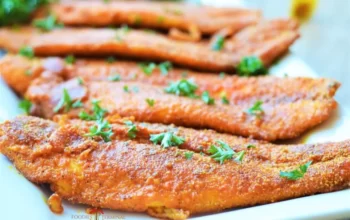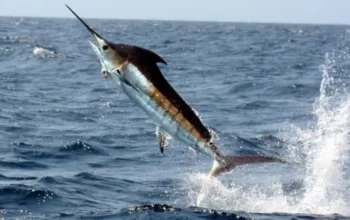What is pollock? Pollock or pollack is the common name used for either of the two species of North Atlantic marine fish in the genus Pollachius. While Pollachius virens is more frequently called to as saithe or coley in Great Britain and Ireland, Pollachius is referred to as pollock in North America, Ireland, and the United Kingdom (derived from the older name coalfish). P. virens is also known as Boston blue (different from bluefish), silver bill, or saithe. P. pollachius is also known as the Atlantic pollock, European pollock, place jaune, and lythe.
Please read on for more detailed information.
Table of Contents
Reasons to Eat Pollock
First reason
Pollock is a “wild” fish. On farms, it is not artificially cultivated. This fish prefers depths of 200 to 300 meters and lives in cold waters (between +2 and +9 degrees Celsius). Planktonic crustaceans make up the majority of Pollock’s diet. As the pollock gets bigger, it starts to eat smaller prey like small fish (capelin, smelt), and squid. Pollock’s high nutritional value and relatively low price make it comparable to more expensive fish varieties. This is because of its marine diet.
Second reason
Lack of nutrition in the form of protein, vitamin A, and fat frequently leads to peeling of the skin, dull hair, and brittle nails. After all, the primary component of hair and nails, keratin, is a protein. You must consume protein from food in order to update it. This issue can be resolved thanks to its moderately high pollack content and low caloric content. Some businesses use pollock roe extract to make cosmetics. A high protein and vitamin A content promotes collagen synthesis, improves skin regeneration, protects against free radicals, and may even normalize hormones, according to some authors.
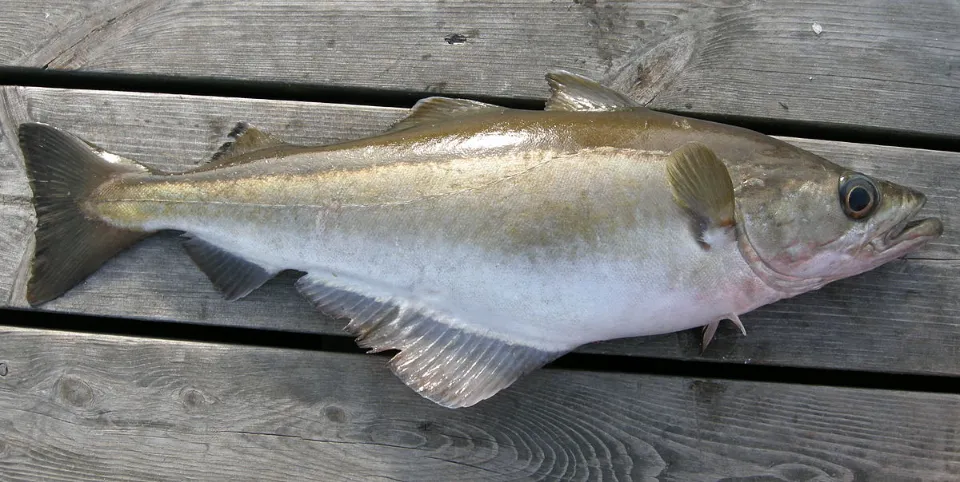
Third reason
Like all forms of cod, pollock is a food that should be consumed by everyone, young and old. 100 grams of pollock contains only 110 calories and 23 grams of protein. Pollock consumption on a regular basis will normalize the plasma sugar level and enhance cognition, focus, and energy. The presence of cobalt is a great benefit. The trace element is in charge of blood coagulation and carbohydrate metabolism. It is necessary for the healthy operation of vital organs. Iodine is also present in pollock; it helps the thyroid gland function, is necessary for the health of the endocrine system, and aids in the physical growth and development of children. The Ukrainian Association of Nutritionists also suggests including pollock in your diet.
Fourth reason
There are probably no longer any people who haven’t heard of the beneficial effects of omega-3 polyunsaturated fatty acids. Pollock is a nutritionally dense and relatively lean fish, but 100 grams of pollock fillets contain 1.2 grams of fat, 600 mg of which are omega-3 fatty acids, which are crucial for the heart muscle, the prevention of cardiovascular diseases, the reduction of bad cholesterol, and the removal of free radicals to delay the onset of premature aging of the body.
Fifth reason
In order to preserve the stocks of high-quality fish for future generations, pollock fishing is done in a way that is both environmentally responsible and rational. International organizations, in particular the National Oceanic and Atmospheric Administration, strictly regulate pollock catches to prevent overfishing. The main countries that catch pollock are the United States and Russia. South Korea catches a lot more fish than Japan, which catches a lot less (since the end of 2015, fish and seafood from the Russian Federation have been officially prohibited from entering the Ukrainian market).
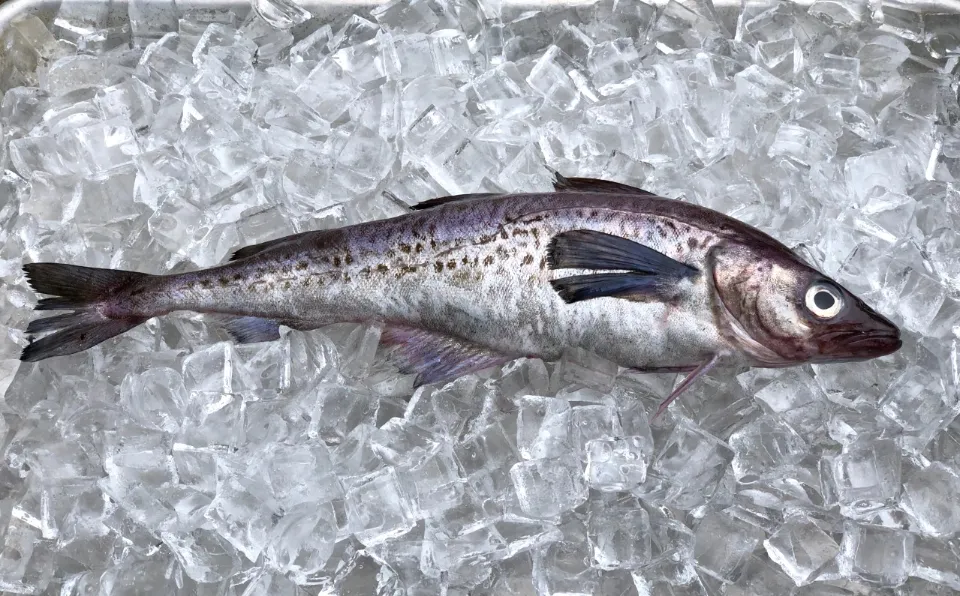
How Do You Tell the Difference Between Pollock Vs. Cod?
Pollock and cod have some differences, despite the fact that they sometimes have a similar appearance.
Body Color: Black and yellow spots run the length of the pollock’s body, giving them their spotted appearance. With dark spots or patterns on the sides, Pacific Cod are brown or grayish in color. The belly of Pacific cod is also paler.
Dorsal Fin: Comparing Alaska Pollock’s dorsal fins to those of Pacific Cod, they are more pronounced. The edges of the cod’s fins are also white.
Tail: Alaska Pollock has a narrower tail than Pacific Cod.
Size: Alaska Pollock can grow up to 3 feet in length. Typically, they average out around 12–20 inches and weigh between 1 and 3 pounds. Cod, on the other hand, are larger fish. They can reach a maximum length of 6 feet and weigh about 25 pounds.
Life span: Around 12 years is the average lifespan of a pollock. Because of this, they begin to reproduce at age 3 or 4. Around 18–20 years is the average lifespan of Pacific cod. Around the age of 4 or 5, they begin to reproduce.
Last but not least, the lower jaw of a Pacific cod has whiskers that resemble those of a catfish. Alaska Pollock don’t.
FAQs
Is Pollock a Good Eating Fish?
Like tuna or salmon, pollock is a good source of protein and is low in saturated fat. Pollock is also low in calories and a good source of vitamin B12, phosphorus, and selenium. Other nutritional minerals you can find in pollock include calcium, iron, magnesium, potassium, sodium, zinc, and vitamin A.
Is Pollock a Cheap Fish?
Pollock is a very affordable fish that has a medium texture and a mild flavour. Pollock is a fish that is high in protein and Omega 3 fatty acids, much like cod and other white fish.
Is Pollock the Same as Cod?
Although they have a similar appearance, the two have some differences. First, Pollock has a milder flavor than Cod. Second, Pollock can lose its shape a lot quicker if overcooked. Although slightly firmer, properly prepared cod meat is still flaky and tender.
What is Pollock Taste Like?
Pollock is a mild, delicate-tasting fish, with a slightly coarse texture. Some find it more flavorful than cod or haddock, perhaps because it has a higher oil content. The color of pollock fillets is a creamy tan. Cooked, the lean, moist meat is white and firm, with a nice flake.
Summary: What is Polluck?
Pollock, also spelled pollack, (Pollachius, or Gadus, virens), North Atlantic fish of the cod family, Gadidae; in Europe, it is referred to as saithe or coalfish. The pollock is an elongated fish that is dark green with a pale belly and lateral line. It has a small chin barbel and, like cod, has three dorsal and two anal fins. It grows to be about 1.1 m (3.5 feet) long and 16 kg (35 pounds) in weight. It is a carnivorous, active fish that typically schools. In addition to providing sport for anglers, it is caught commercially for human consumption.

